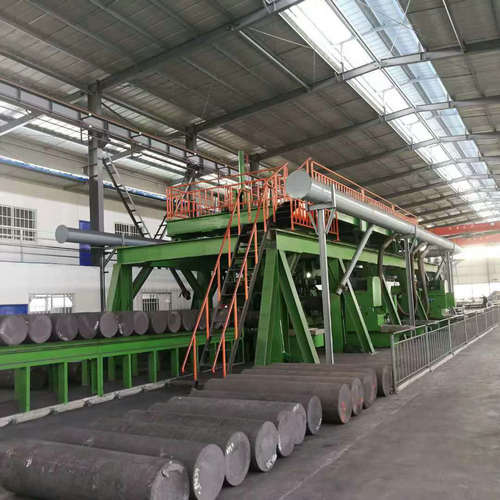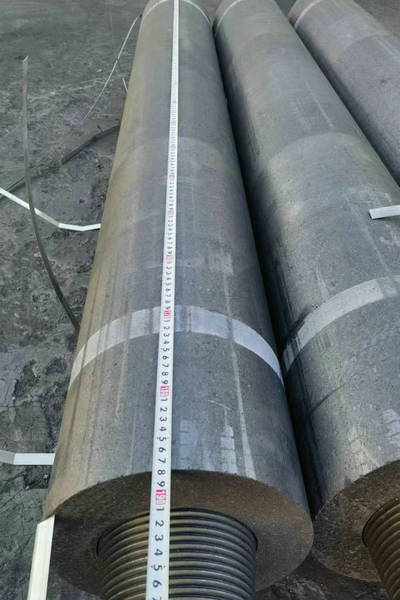Graphite electrodes are essential components in the steelmaking and metal processing industries. These electrodes are widely used in electric arc furnaces (EAF) and ladle furnaces for the production of steel and other metals. The unique properties of graphite electrodes make them ideal for high-temperature applications, and they play a crucial role in the efficient and cost-effective production of high-quality steel. In this article, we will explore the various applications of graphite electrodes and their significance in the steel and metal processing industry.
Electric Arc Furnaces (EAF)
One of the primary applications of graphite electrodes is in electric arc furnaces (EAF) for steel production. EAFs are used to melt scrap steel and other raw materials to produce new steel. Graphite electrodes are used to conduct electricity and generate the high-temperature arc required to melt the raw materials. The electrodes are immersed in the molten metal and are responsible for transferring electrical energy to the charge, thereby heating and melting it. The use of graphite electrodes in EAFs allows for precise control of the melting process and ensures efficient energy transfer, resulting in high-quality steel production.
Ladle Furnaces
Ladle furnaces are another important application area for graphite electrodes. These furnaces are used for secondary refining of steel, where the molten steel from the primary steelmaking process is further treated to achieve the desired chemical composition and temperature. Graphite electrodes are used in ladle furnaces to provide the necessary heat for refining and alloying processes. The electrodes play a crucial role in maintaining the temperature of the molten steel and facilitating the addition of various alloying elements and fluxes. The use of graphite electrodes in ladle furnaces ensures precise control over the refining process, leading to the production of high-quality, clean steel.
Other Steelmaking Processes
In addition to EAFs and ladle furnaces, graphite electrodes find applications in other steelmaking processes such as submerged arc furnaces (SAF) and other specialty steel production methods. Submerged arc furnaces are used for the production of ferroalloys, silicon metal, and other specialty metals. Graphite electrodes are employed in these furnaces to generate the high-temperature arcs required for smelting and refining the raw materials. The use of graphite electrodes in submerged arc furnaces enables efficient and controlled heating, leading to the production of high-purity specialty metals.
Aluminum and Other Non-Ferrous Metals Production
Graphite electrodes are not limited to steelmaking applications and are also widely used in the production of non-ferrous metals such as aluminum, copper, and other alloys. In the aluminum industry, graphite electrodes are used in the production of primary aluminum through the Hall-Héroult process. The electrodes are immersed in the electrolytic cell and are responsible for passing the electrical current through the alumina to facilitate the electrolysis process, resulting in the production of pure aluminum. Graphite electrodes are also used in the smelting and refining of copper and other non-ferrous metals, where they play a critical role in providing the necessary heat and electrical conductivity for the production process.
Chemical and Industrial Applications
Apart from the steel and metal processing industries, graphite electrodes find applications in various chemical and industrial processes. They are used in electric heating elements for high-temperature furnaces, resistance heating, and other thermal processing applications. Graphite electrodes are also employed in the production of certain chemicals and materials through processes such as electrochemical synthesis and electrolysis. The unique combination of high thermal conductivity, low electrical resistance, and chemical inertness makes graphite electrodes suitable for a wide range of industrial applications where high-temperature and corrosive environments are involved.
Advanced Materials and Research
Graphite electrodes are also utilized in the production of advanced materials and in research and development activities. They are used in the synthesis of carbon-based materials, such as graphene and carbon nanotubes, through processes like chemical vapor deposition (CVD). Graphite electrodes play a crucial role in providing the necessary carbon source and thermal energy for the growth of these advanced materials. Additionally, graphite electrodes are used in various research applications, including plasma physics, material science, and high-temperature experiments, where their high-temperature tolerance and electrical conductivity are essential for conducting experiments and generating controlled thermal environments.
Environmental Considerations
The use of graphite electrodes in industrial processes raises environmental considerations, particularly in terms of energy consumption and emissions. While graphite electrodes are essential for high-temperature applications, the energy efficiency of the processes in which they are used is a significant factor in minimizing environmental impact. Efforts are being made to optimize the design and operation of electric arc furnaces and other industrial processes to reduce energy consumption and emissions. Additionally, advancements in electrode materials and manufacturing processes are aimed at improving the sustainability and environmental performance of graphite electrodes.
Graphite electrodes are versatile and essential components in a wide range of industrial applications, particularly in the steel and metal processing industries. Their unique combination of properties, including high thermal conductivity, electrical conductivity, and chemical inertness, makes them ideal for high-temperature and demanding environments. From steelmaking processes such as electric arc furnaces and ladle furnaces to non-ferrous metal production, chemical applications, and advanced materials synthesis, graphite electrodes play a crucial role in facilitating efficient and controlled heating and refining processes. As industries continue to evolve and innovate, the demand for high-quality graphite electrodes and their applications is expected to grow, driving advancements in materials, processes, and environmental sustainability.
Post time: May-27-2024








